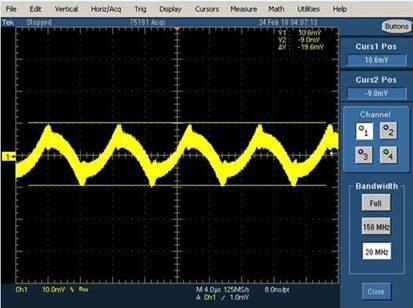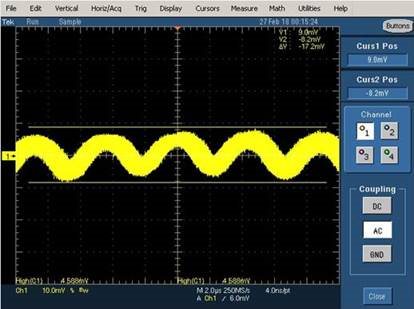Customer has modified an TPS50601A EVM to look at his desired configuration: L = 5.6 uH, Cout = 2x18uF + 8uF, all ceramic. Vin = 5V. Fsw = 200 kHz
With output set to 2.5V, load = 250 mA, output ripple captured on scope:
This seems reasonable.
When output voltage adjusted to 1.8V, (Iload = 250 mA), output ripple waveform looks like this:
Amplitude of ripple (pk-pk) seems reasonable, but waveshape is different from 2.5V case. For example, the rise/fall times don't seem to align with duty cycle (36%), and signal appears "noisier". Any explanations as to why the different response?



